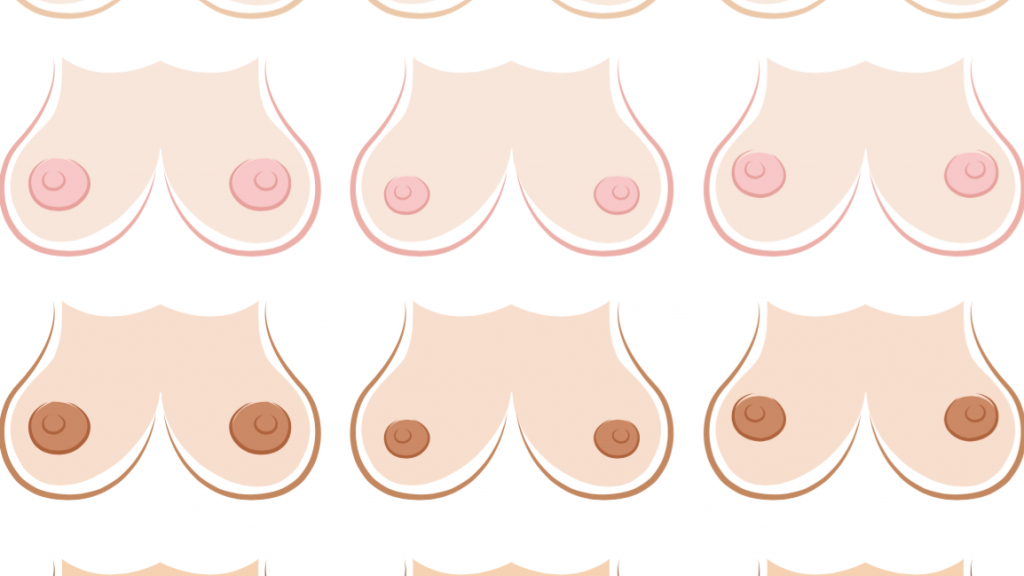
Will I be able to breastfeed with these nipples?
Every mother-to-be wonders at some point during pregnancy whether her nipples will be suitable for breastfeeding her baby. Nipples come in all shapes and sizes; in general, all of them are ideal for breastfeeding. Babies do not extract breastmilk by squeezing the nipple; they must latch on and suck the nipple and a good portion of the areola simultaneously because this is the only way to get the milk out.
What is the purpose of the nipple?
Given all nipples are useful for breastfeeding and breastmilk is not expressed from the nipples, what are they for? Babies are born with a limited sense of sight; at birth, they only have limited vision within a hand-wide distance of their face. Nature is aware of this limitation, so during pregnancy, the color of the nipple darkens so that the newborn can see easier. In addition, the nipple is more prominent than the rest of the breast, so the baby can use it as a touch signal. Let’s try an experiment to explain this better.
Ask someone to draw a cross on a big blank wall. You cannot see where they have positioned it. Then you cover your eyes and try to find it.
So? Impossible! Isn’t it?
In fact, the nipple is a tactile reference to help babies know where their food is. There are many types of nipples: very prominent, normal, flat, or even inverted nipples. In addition, their diameter can vary a lot, but usually, they all allow the baby to understand where the milk comes from and where to latch on.
What about flat nipples?
Good question! If a mother has a flat nipple, we may think it will be difficult for the baby to breastfeed. But in fact, we can help the baby to find the breast and latch on. They can often do so on their own, but we can give them a hand if they are a little lost.

The most important thing, if you have a flat nipple, is that your baby should be laid on top of you, in the middle of your chest, as soon as it is born. Babies are born ready to crawl and find the breast, so if they are a bit disoriented when they arrive, you can make it easier for them to find their way by squeezing your breast as if it were a sandwich, to make it easier for them to latch on. If your baby still can’t latch on 3-4 hours after delivery, you can try using nipple shields, which usually help a lot in these cases.
Early skin-to-skin contact immediately after birth facilitates the first latch and the establishment of breastfeeding.
Can I breastfeed with inverted nipples?
There are several types of inverted nipples. Most women with an inverted nipple can breastfeed without problems if the baby starts suckling in the delivery room and is allowed skin-to-skin contact, giving the baby a chance to learn how to breastfeed. Over the days and as the baby nurses more and more, the nipple will come out more or less so.
The problem with this type of nipple occurs when the baby does not have the chance to make this first feed, is separated from their mother, or many hours pass until the baby can have the first feed. These babies may be unable to find the nipple or may not even know how to latch and suckle. In this case, the use of a thin latex nipple shield may help to initiate breastfeeding.
Difficulties with inverted nipples can happen in the case of “real” inverted nipples. This is a rare type of internal nipple malformation where the nipple protrusion muscle pulls the nipple inwards, resulting in nipple damage, cracks, and a lot of pain. Also, in some cases, this type of nipple does not have any nipple pores, which prevents breastmilk from flowing out and causes very painful milk retention. This type of nipple makes breastfeeding impossible if the condition affects both sides).
Are my nipples too big?
Some mothers have very wide or very long nipples that can make the sucking motion difficult. In the case of wide nipples, they are so large in diameter that the baby cannot suckle them fully. In the case of very long nipples, these can activate the gag reflex, located on the back of the baby’s tongue, and make an effective latch impossible, as the baby gags even before starting to suck.
In both cases, exclusive pumping and offering milk with the chosen supplementation system is necessary until the baby’s mouth grows a little and allows for proper sucking.
Do I have to prepare my flat nipples during pregnancy?
No matter how your nipples are shaped, no special preparation during pregnancy is recommended for them. Exercises and the use of special devices are not helpful at all. Your nipples do not require any preparation, whatever shape or size. If you want to prepare, find a breastfeeding support group during pregnancy and take advantage of your pregnancy to learn everything you can about breastfeeding.
Any more questions?
If you have any more questions about breastfeeding and motherhood, we can help. Please download our free app, LactApp, for iPhone or Android. In the contact section of the app, you can find an in-app consultation channel where our experts will answer your questions.